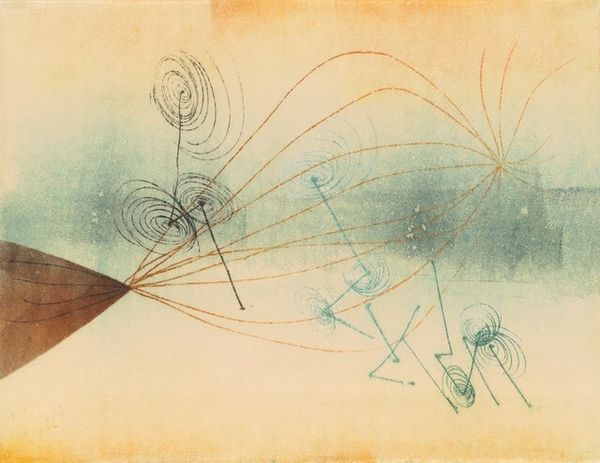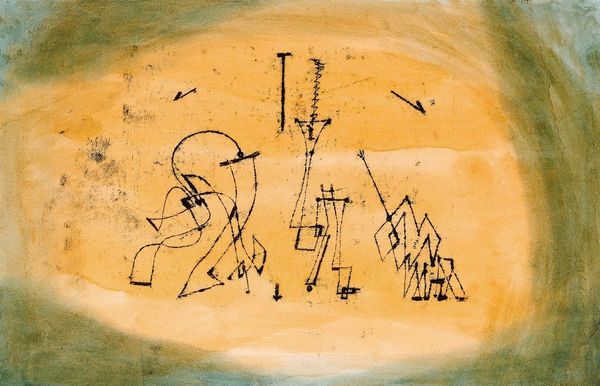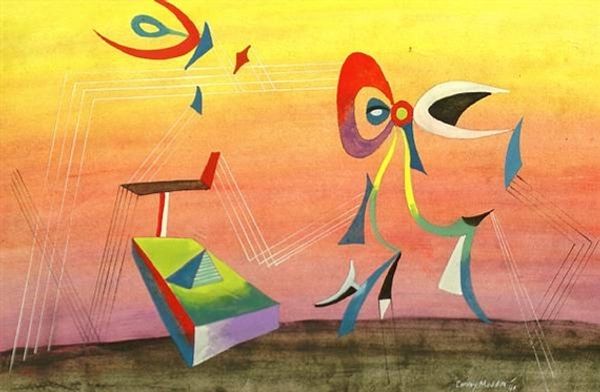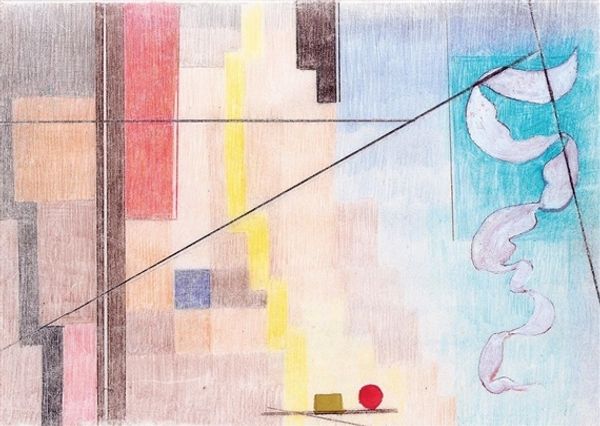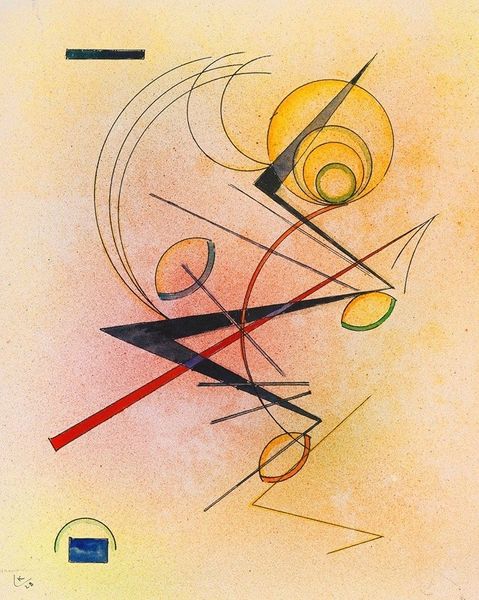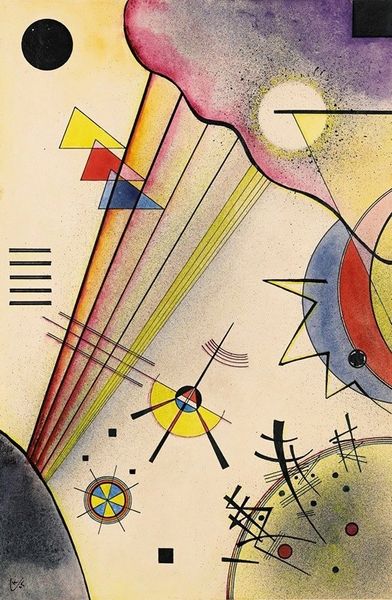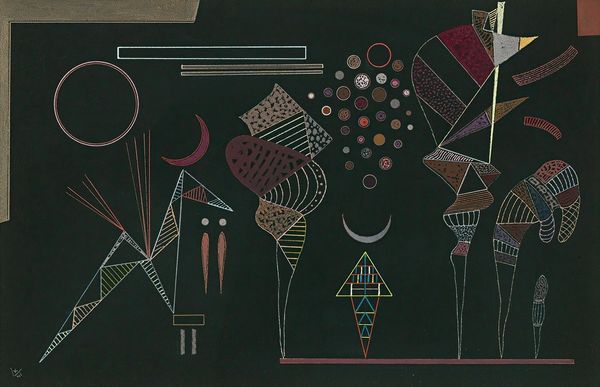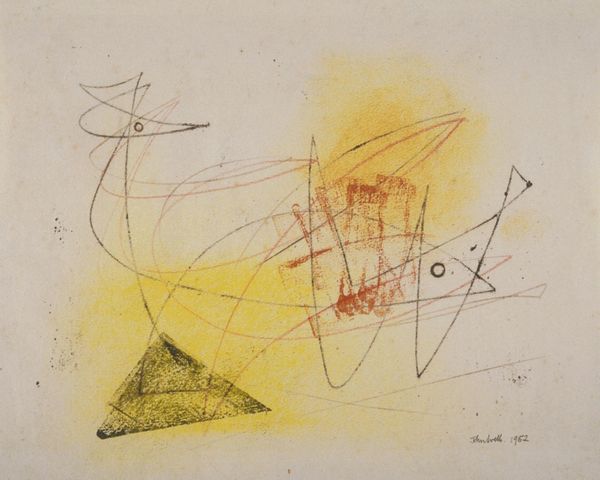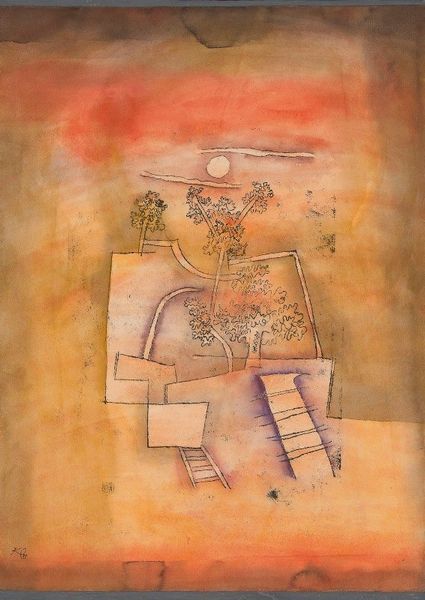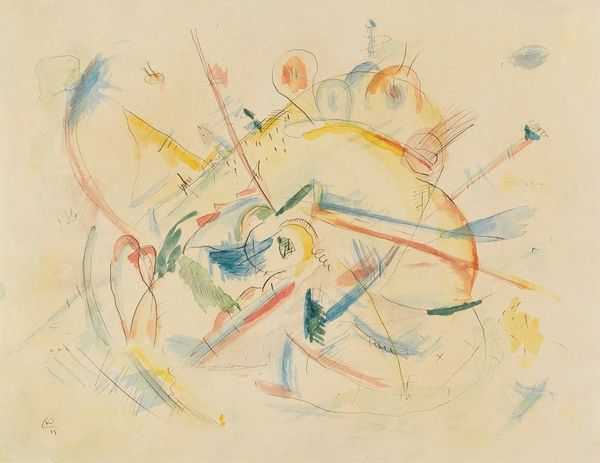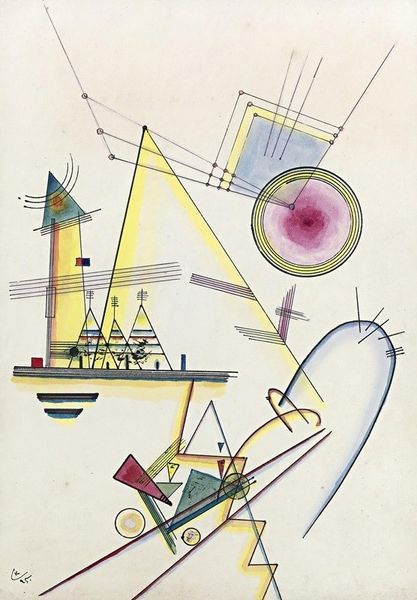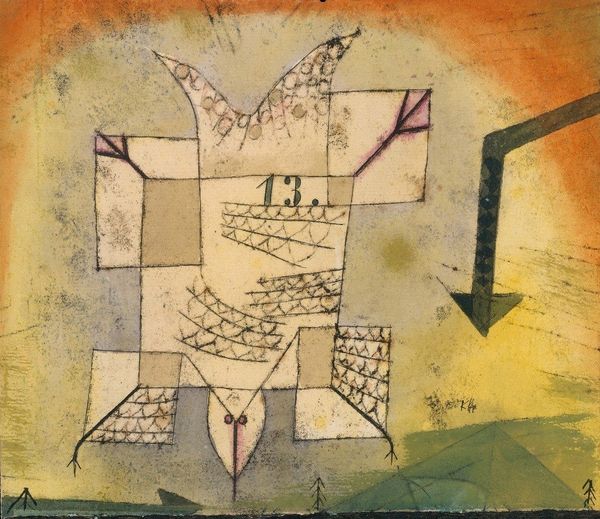
watercolor
#
abstract
#
watercolor
#
geometric
#
expressionism
#
modernism
Copyright: Public Domain: Artvee
Editor: Let's explore Wassily Kandinsky’s "Linie," created in 1929 using watercolor. It feels so meticulously planned, yet also incredibly free. What strikes me is how he juxtaposes the rigid geometric forms with these washes of color. What do you see in this piece? Curator: It’s important to understand the socio-political context. Kandinsky was teaching at the Bauhaus at this time. "Linie," with its clean lines and geometric shapes, reflects the Bauhaus’s emphasis on functional design and its utopian social vision. But it's equally crucial to remember that the Bauhaus, despite its progressive ideals, faced constant political pressure. Do you think the seeming “freedom” you observed is, perhaps, a constrained kind of liberty? Editor: That’s a fascinating point. I hadn’t considered how political tensions might be reflected in such an abstract composition. The lines feel very assertive and directional, but, yes, maybe contained somehow...How do you think the public might have perceived it at the time, given those constraints? Curator: Well, Kandinsky's art often faced resistance. The rise of National Socialism would soon label this very type of abstraction as degenerate. The bright colours could be interpreted as an act of defiance. To present work such as this meant potentially losing his platform and standing, not only as an artist, but as an intellectual. The question remains, how has it shaped our understanding of modern art since? Editor: I’m definitely seeing it differently now, knowing how the political climate influenced Kandinsky. Curator: Exactly. And art museums play a huge part in canonizing, giving validity, or ignoring a work based on sociopolitical currents. Editor: It gives you a whole new perspective. Thanks for highlighting that.
Comments
No comments
Be the first to comment and join the conversation on the ultimate creative platform.
